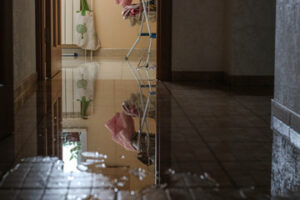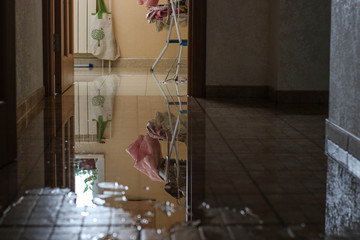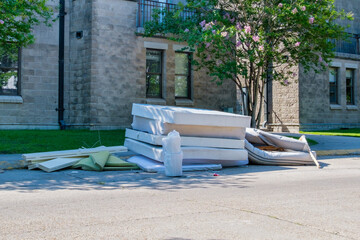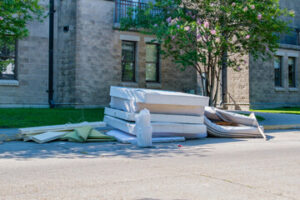If you are looking for an expert in water damage restoration, you want an IICRC-certified professional. They follow the latest techniques and technology in restoring your property to its previous state.
The first step in Water Damage Restoration Beverly Hills are to dry the affected areas. This includes mopping and using fans, dehumidifiers, and other tools. Standing water can encourage the growth of mold within 24 hours, so it is important to move quickly.
When a home or business suffers water damage, the first step is to assess the situation and determine how much restoration is needed. This is a complex process, and should only be performed by trained professionals. A proper assessment can help prevent costly mistakes, and will also provide accurate information to insurance providers or property owners.
The initial assessment is a visual inspection of the affected areas. Professionals will take pictures and video, and write up a report with all of the important information. This will include the type of water damage, the materials affected, the extent of the moisture problem, and the cost to repair or replace them. This information will be used to create a plan for the restoration process and to communicate with both the insured and insurance provider.
The next step is to remove any standing water from the area. This is done using large pumps and vacuums that can clear gallons of water in a short amount of time. It is important to get the water out as quickly as possible because wet materials begin to develop mold within 24 hours.
Once the standing water is removed, the next step is to dry out the affected areas. This is done with industrial-grade wet/dry shop vacs and fans that can move five times as much air as box or residential fans. Professionals will test the moisture levels in walls, floors and carpeting to ensure they are fully dry before attempting any repairs.
If necessary, the building materials that cannot be saved may be removed at this point. This includes drywall down to the studs, carpeting and pad, and any other materials that will not dry thoroughly enough to save them. This will save the property owner money by preventing the need to purchase new materials, and it will speed up the overall drying process.
If the water damage is severe, it may be necessary to disinfect and deodorize the space. This is done using a variety of cleaning products, equipment and techniques that will be tailored to the specific needs of each space.
Water Extraction
The first step of water damage mitigation is to contain the area and stop the spread of water. This may include tarping off areas or even moving contents from the area to prevent further damage and the potential for toxic mold growth. It may also involve removing materials that can’t be salvaged to help prevent further structural damage and loss of property value.
Once the affected area is contained, professionals will begin the process of removing water with powerful pumps and truck-mounted vacuum units. Using these tools, they can quickly remove thousands of gallons of water from the affected space. They’ll also utilize moisture meters to identify and eliminate hidden pockets of moisture that could lead to secondary damage, like mold growth or weakened structural integrity.
Before attempting to remove water, it’s important to make sure the power is turned off to avoid electrical hazards. This is especially true if the water has reached the ceiling or walls.
It’s also important to locate the source of the water and turn it off. This can be done by turning off the main water valve if it’s located outside of your home or finding and shutting off individual water sources, like showers and faucets.
Water removal should be completed as quickly as possible. The longer water remains in a building, the more damage it causes. This can range from discoloration of fabrics to severe structural issues. It can also lead to the development of toxic mold, which can pose health risks for residents.
Professionals will use their experience and specialized equipment to determine the best water extraction techniques for a particular situation. This can involve draining visible water, using moisture mapping, and dehumidification to dry the area completely.
It’s also important to protect items from further damage by placing them on foam blocks or covering them with plastic sheeting. If items are left sitting in water for too long, they may need to be removed and replaced entirely. This can be expensive, but it’s often the only way to avoid further deterioration and potential permanent damage.
Dehumidification
Water damage that remains unchecked creates ideal breeding grounds for bacteria, viruses and molds. These microorganisms can trigger a number of health problems including respiratory issues, skin irritation and headaches. They can also lead to structural damage and rusting as well as contribute to the deterioration of wood and metal materials.
The first step of any water damage restoration involves identifying and stopping the source of the water. This can include shutting off the power if there’s a risk of electrical hazards. It can also involve identifying the type of water damage and determining how much moisture has been absorbed. This information is crucial when deciding what equipment is required to remove the water.
Once the source of the water has been stopped and any dangerous materials have been removed, it’s time to begin the drying process. This can be done by increasing air circulation in the affected area, removing drawers and cabinet doors to allow for drying and using dehumidifiers where necessary.
Dehumidification can be particularly important after a flood, as it can help to lower humidity levels and stop the formation of molds in the affected area. A dehumidifier works by absorbing the water from the air, reducing its moisture content and then releasing dry air back into the room. Depending on the severity of the flood and the materials it has damaged, this process may take several days to complete, but it’s an essential part of the water damage restoration process.
Other types of dehumidifiers include portable ones that can be used to dehumidify small rooms and ductwork. These are often more affordable than other models and are easy to transport and store when not in use. They can also be combined with a deodorizer to eradicate any unpleasant smells that may be present in the affected area.
For larger areas, a commercial dehumidifier can be used to quickly and effectively reduce the amount of water vapor in the air. This is a much more efficient method of dehumidification and can save you a great deal of money in the long run. A system like this works by passing the air through a tower of falling drops of ethylene glycol, which absorbs the water and moisture, leaving drier air. It can then be regenerated by passing the glycol through a heated stream of air, resulting in a continuous cycle that helps to dry out a room in a relatively short space of time.
Cleaning
Water damage restoration is returning your home or business to its former condition after a water catastrophe. This can be anything from a burst pipe to a flood caused by a natural disaster. Water can cause a wide variety of problems including structural damage, rotting wood and drywall, mildew and mold. It can also be very costly and a major inconvenience. Luckily, there are steps that can be taken to help minimize the damage and restoration costs.
The first step is to turn off the power and water supply if it’s safe to do so. If there’s a lot of water, pumps and vacuums may need to be used to remove the moisture. It’s important to check out the source of the problem as well. For example, if the flooding was caused by a leaking roof, it will need to be fixed to prevent future problems.
Once all the standing water has been removed, it’s time to clean and dry everything. This can be a huge job. It involves cleaning and disinfecting furniture, carpets, rugs, walls, ceilings and more. Often, this is done using commercial-grade fans, dehumidifiers and other equipment.
If the area is affected by sewage, silt or oil, special cleaning and disinfecting methods will need to be followed. These may include steam cleaning or chemical solutions. It’s important to contact local health authorities to determine the proper way to dispose of these contaminated materials.
When all the items have been cleaned, sanitized and dried, they can be returned to their normal places in the home. It’s a good idea to use an air cleaner or ozone generator to further sanitize the areas. This can be especially helpful in reducing the bacteria, germs and other contaminants that are often found in water-damaged homes.
Water damage restoration is a complex process that requires specialized tools and equipment. The restoration professionals have the experience and knowledge needed to get your property back to normal as quickly and thoroughly as possible. They can also advise you on ways to reduce the chance of a water emergency in the future, such as by installing more ventilation and using paints and flooring that are designed to resist moisture.


